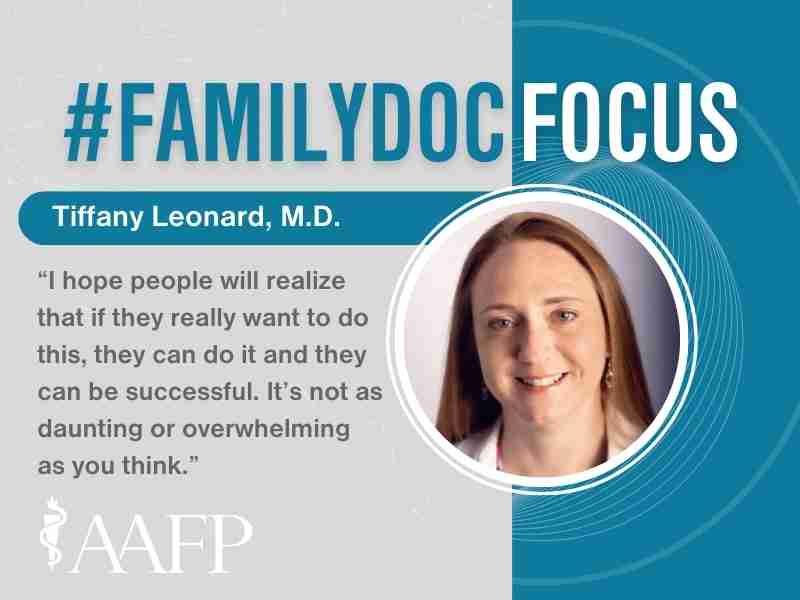FMX Speaker: DPC Transition Less Daunting Than You Think
August 31, 2022, 8:45 a.m. David Mitchell — There are certain things one is likely to need when starting a new primary care practice: a clinic location, an EHR system and a business plan, to name a few.

Tiffany Leonard, M.D., was waiting on something less obvious.
“I’ve actually known about direct primary care since I was in residency, and it was always kind of a pipe dream,” said Leonard, who left her position as an employed physician and residency faculty in 2018 and opened her own DPC practice in Hatboro, Penn. “I know it sounds really ridiculous, but the reason I didn’t do it sooner is because of a single cell tower.”
Or, more specifically, the lack of one.
Leonard’s husband, a former ski instructor, is a member of the Plattekill Mountain Ski Patrol in New York. Leonard has been the patrol’s medical director since 2009, when she was in residency at Chestnut Hill Hospital in Philadelphia. The mountain is four hours north of Hatboro, and Leonard and her husband are there roughly three out of every four weekends from late December through early April.
“One of the perks of DPC is supposed to be that your patients can reach you after hours and on the weekends with acute issues to try to minimize their reliance on urgent care,” Leonard said. “Where we ski, there didn’t used to be cell reception. I didn’t feel right trying to open a practice where I’m trying to promise something that I was physically incapable of providing. And then one day, they put it in a cell tower, my job went to hell and the stars all aligned.”
Leonard left her practice in Philadelphia and opened her DPC clinic in Hatboro. Nearly three dozen of her patients followed her to the new location, despite the 45-minute trek north. She was generating enough income to cover expenses within two months.
“I call that dedication,” she said of her patients. “I really thought I would be starting from scratch.”
Leonard will present the Top 10 Things to Think About If You’re Transitioning to DPC Sept. 20-23 during the Family Medicine Experience in Washington, D.C. The session will identify the steps necessary to open a DPC practice as well as resources to help plan it.
What Leonard really hopes to deliver is motivation.
“I hope people will realize that if they really want to do this, they can do it and they can be successful,” she said. “It’s not as daunting or overwhelming as you think.”
Leonard said she left her employed position, in part, due to lack of autonomy and insufficient time with patients.
“I know my patients on a much more personal level now than I did before, which has led to better outcomes,” she said. “Several of the patients who followed me from my previous practice were horribly uncontrolled diabetics. With the relationship we have here, all of a sudden their sugars are now controlled. Their A1c levels are below 7%, they’re feeling better and they’re taking better care of themselves. The only thing that we can equate it to is a better relationship with me. They trust my judgement more now.”
Leonard said she used to take chart work home with her, or to the mountain on weekends. She would get up early on mornings at Plattekill to chart before the throng of skiers reduced Wi-Fi capability.
“I didn’t have to do that this year,” she said. “It was phenomenal.”
Leonard, who works alone and likes it that way, has intentionally grown her practice slowly and now has about 250 patients. She might cap herself at 350.
“Originally, I thought I was going to do the standard DPC thing, grow to 600 patients and hire an MA,” she said. “I enjoy not having to manage somebody.”
Leonard said that because of her husband’s income, she was comfortable making less than she did as an employed physician. But she said that didn’t have to be a limitation or expectation for others in DPC.
“My income’s nowhere near what it was,” she said, “but I don’t need it to be. If I needed it to be, I have every confidence that I could have grown the practice faster. That’s just not what I was looking for. You can make DPC what you need it to be.”
Being in DPC has given Leonard more time to commit to issues she cares about. She’s the Board Chair of the Pennsylvania AFP and secretary of the Direct Primary Care Alliance. She serves the AAFP as vice chair of its DPC member interest group and is a member of the Commission on Continuing Professional Development.
“I got involved with the PAFP and leadership when I was a second-year medical student,” she said, “and I’ve enjoyed it so much.”
As part of her work on the commission, Leonard, who grew up in Wyoming, also serves as a member of the Academy’s Working Group on Rural Health. Leonard said she always has been interested in primary care because that was the area of health care she was exposed to as a kid.
“When I was in med school, I flirted with the idea of emergency medicine and also anesthesia,” she said. “I really love the procedures in anesthesia, especially with pain management, but I really hated the fact that half of your patients were unconscious.
“And then with emergency med, the complete and utter lack of follow-up drove me insane. You never find out whether you’re right or not. You see these patients with these weird presentations; you do this work-up; you send them off to somebody else; and you never find the actual answer. I really like to have answers. That’s why I ended up in family medicine: I do a little bit of everything, and I get the closure I like.”